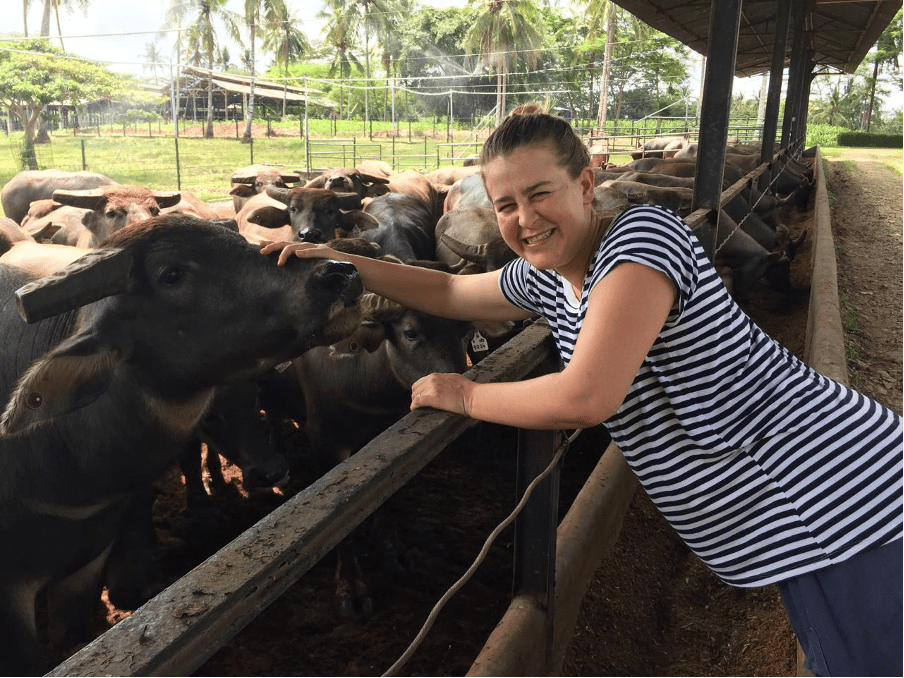
Brooke Barkla at the Berrimah Export Yards in Darwin. Feeder buffalo being prepared for live export.
The Buffalo Dilemma: Challenges and Market Solutions in Arnhem Land
At the end of the Brucellosis and Tuberculosis Eradication Campaign (BTEC) in the early 1990s, a small group of buffalo in Arnhem Land was identified as disease-free. This status was meticulously monitored until the mid-1990s, when approximately 40,000 head of buffalo were left to multiply in their natural environment.
Three decades later, their descendants—estimated to number between 200,000 and 300,000—are reproducing rapidly. About 95 percent of these buffalo currently inhabit Arnhem Land, an area largely inaccessible due to unsealed roads and seasonal floods that cut off access for nearly six months each year.
The Environmental Impact
The overwhelming buffalo population has begun to wreak havoc on fragile ecosystems like the Arafura Swamp. As such, harvesting these animals seems a logical course of action. However, the challenge lies in finding profitable markets for their meat.
During muster events, a mix of animals is captured. While the largest buffalo are suitable for slaughter, medium-sized males may be exported live to be fattened in Asia. Young animals can be kept as domesticated breeders or also sold into the live export market once they reach a suitable size.
High Costs of Harvesting
The process of harvesting buffalo in Arnhem Land is prohibitively expensive. Contractors must negotiate land use agreements with Traditional Owners (TOs) while transporting heavy equipment into remote locations. The journey from western Arnhem Land to the nearest abattoir at Batchelor spans at least 400 km.
The cost to capture and deliver a larger slaughter buffalo to Batchelor is approximately $400 per head, plus royalty payments averaging around $150 per head to the TOs. Consequently, a harvester needs a minimum return of about $550 per head just to break even, a price point that exceeds the abattoir’s buying capacity.
The Need for New Strategies
Live exports for male buffalo are commercially viable, but mixed herds complicate matters. Without a profitable slaughter market for other buffalo, the costly harvest becomes unfeasible. In 2024, this situation resulted in no significant wild harvest, allowing the buffalo herds to grow and causing further environmental issues.
The only alternative seems to be shooting the animals to waste—a strategy already employed in certain areas due to skyrocketing buffalo populations, resulting in taxpayers absorbing the costs. Estimates suggest that preventing herd growth might cost around $2.6 million annually, escalating to $10 million for meaningful reductions.
Exploring New Markets
One possible solution is to redirect federal funds earmarked for waste shooting towards finding new markets for buffalo beef. Unless a sustainable commercial avenue for buffalo meat is established, taxpayers will continue to shoulder impending costs.
Additionally, integrated management strategies could help establish target populations, combining commercial harvest with strategic culling. A small abattoir in western Arnhem Land has the potential to process buffalo, but expansion of throughput is necessary.
Biosecurity Risks and Future Considerations
Wild ruminants present significant biosecurity risks, especially given the disease threats from neighboring countries. The commercial harvest of buffalo could improve exotic disease surveillance efforts.
With a projected population of 600,000 buffalo by 2030 under current conditions, immediate action is essential. If anyone has innovative suggestions to tackle this issue, it is crucial to bring them forward. This dilemma affects not only the residents of Arnhem Land and the Northern Territory’s buffalo industry but also every Australian taxpayer.
- Ross Ainsworth serves as the Executive Officer of the NT Buffalo Industry Council.
This HTML structure organizes the content into sections with headings, making it clear and engaging for readers. The use of appropriate tags enhances SEO and usability on WordPress.



